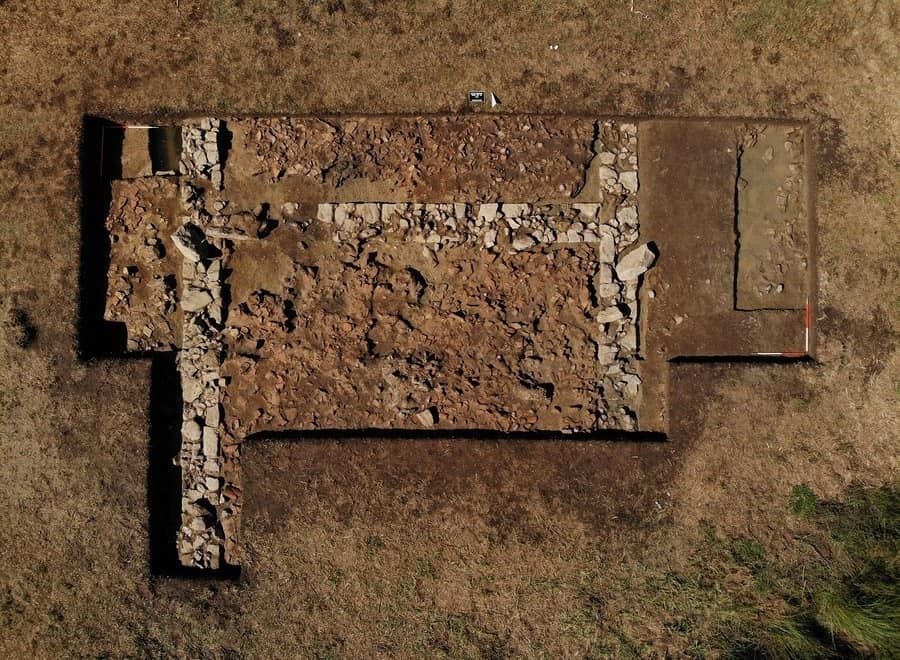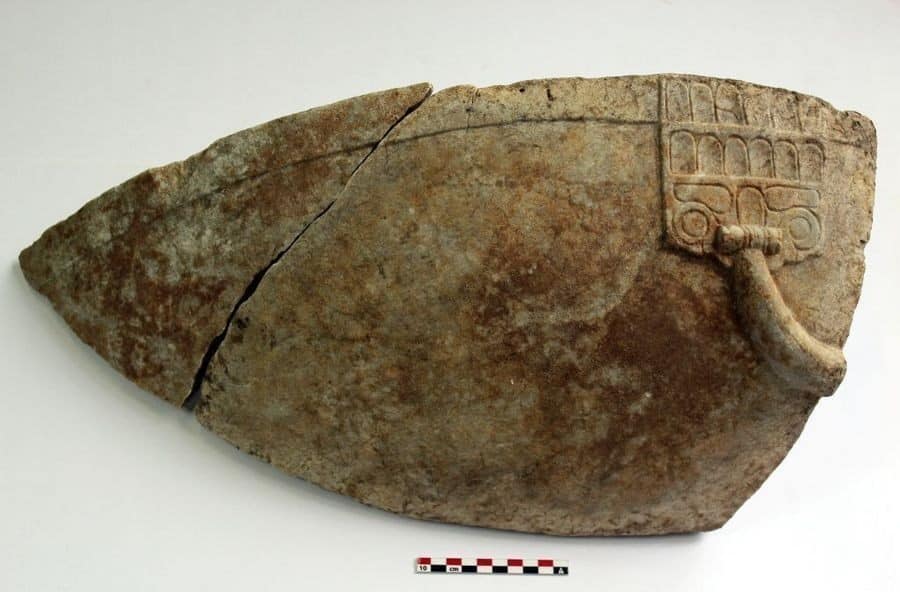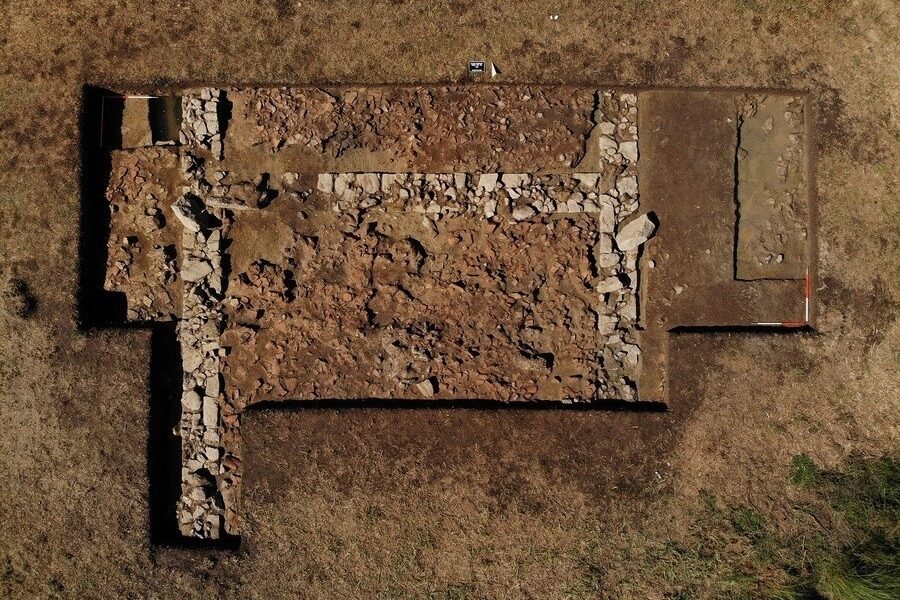Building remains which are believed to be a Temple of Poseidon were detected at the Key of Samikous, according to an announcement by the Ministry of Culture and Sports.
The location Kleidi, where the ancient temple-shaped building was located, had been proposed by earlier researchers as a possible location of the famous ancient sanctuary, as it is located in the foothills of the ancient acropolis of Samikos, which dominates the area north of the Caiaphas lagoon on the west coast of the Peloponnese.
It has been preceded – in 2017, 2018 and 2021 – by geoarchaeological and geophysical research by the Ephorate of Antiquities of Ilia and the Austrian Archaeological Institute. The first excavation period is a five-year research program, (years 2022-2026).
According to the information provided by Strabo (Geographies, 8th book), the sanctuary of Poseidon was an important cult centre of the amphictyony of the cities of Triphylia and was located near the sea, under the acropolis of Samikos.
In the excavation work completed at the end of September, it was revealed foundation section of a large building 9.40 m wide, whose walls are 0.80 m wide. A dense layer of tiles was found inside.
Based on the indications of the geophysical survey and the excavation data, a building of at least 28 m in length can be reconstructed, which had two inner rooms, as well as a pronaos and a back building or shelter.
The elongated temple-shaped building probably belonged to the sanctuary of Poseidon and may be identified with the god’s temple.

In combination with the ceramosis, a laconic type, the discovery of part of a marble enclosure leads to the initial dating of the building to the Archaic period. The marble basin, which imitates a copper basin, is a characteristic vessel with a cultic use that belongs to a sanctuary.
This discovery gives new perspectives to the research of the political and economic importance of the Amphictyonia of the triphyletic cities, during the 6th century BC, Msas the sanctuary of Poseidon was the center of their religious and national identity.

The research program aimed at investigating the topography of the area and locating the sanctuary of Poseidon and the port of Samikos, is a collaboration of the Ephorate of Antiquities of Ilia, under the direction of Dr. Erofilis Kollia, with the Austrian Archaeological School in Greece, under the direction of Dr. Birgitta Eder.
The research, funded by the Gerda Henkel Foundation and the Austrian Archaeological Institute, will continue in the coming years to further investigate the sanctuary of Poseidon and the archaic temple.


